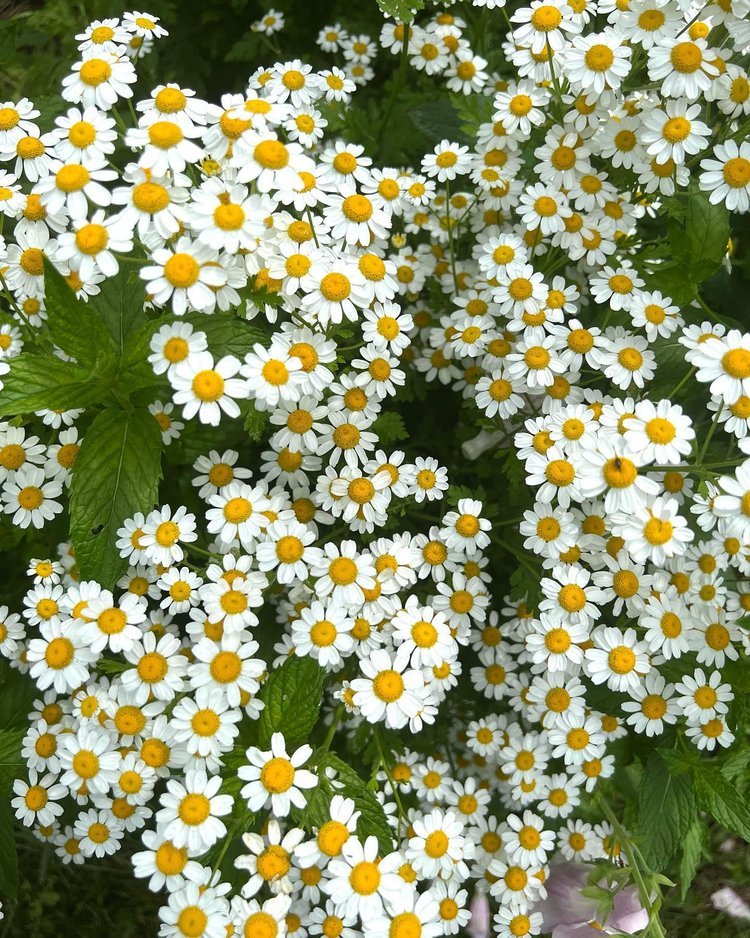Feverfew
(Tanacetum parthenium)
The Friendliest Feverfew. (In experimental Hugulkultur bed) Photo by Ilana Sobo.
Feverfew (Tanacetum parthenium) is a herbaceous perennial that has long been valued for its medicinal properties. Native to Europe and Asia, feverfew has a rich history of use in traditional herbal medicine, especially in relation to headaches, migraines, and inflammatory conditions. Its distinctive daisy-like flowers and aromatic leaves have made it a popular addition to herbal gardens, as well as a versatile plant for both culinary and therapeutic purposes. The active compounds in feverfew, particularly parthenolide, are believed to support the body’s natural response to inflammation, and it is often used in tinctures, teas, and capsules for its purported benefits.
In traditional European folk medicine, feverfew has been employed for a wide range of ailments, including fever, arthritis, and digestive disturbances. It was especially renowned for its use in migraine relief, with historical texts describing its ability to alleviate headache pain when consumed regularly. Native to the Mediterranean region, feverfew is now cultivated widely and has been embraced in modern herbalism for its calming properties and its ability to reduce the frequency and severity of migraines. It is also known for its mild sedative effects, which make it useful in supporting relaxation and promoting restful sleep.
Growing feverfew is relatively easy, as it thrives in well-drained soil and prefers full sun to partial shade. It can be grown from seeds or cuttings, and it typically reaches a height of 1-2 feet, producing small white flowers with a yellow center. Once established, feverfew requires minimal care, making it an excellent herb for beginners in herbal gardening. Regular harvesting of the leaves and flowers is necessary to ensure fresh supplies for medicinal use.
Feverfew is a pollinator-friendly plant, attracting bees and butterflies, which are drawn to its bright flowers. By cultivating feverfew in your garden, you can help support local pollinators while also benefiting from its medicinal properties.
Disclaimer:
Feverfew may cause allergic reactions in some individuals, and it may interact with blood-thinning medications. Seek professional advice before incorporating new herbs into your wellness routine.
References:
Graham, B. (2003). The Herbal Medicine-Maker's Handbook: A Home Manual. Crossing Press.
Hoffman, D. (2003). Medical Herbalism: The Science and Practice of Herbal Medicine. Healing Arts Press.

